Here Comes the Sun, Doo’n Doo Doo: Gettin’ Started with Seed Starting…
Twenty degrees fahrenheit. Ow… That’s nippy! Yes, the outside temperature still says ‘winter’ loud-and-clear, but the good new is that the days are getting longer, and the sunlight is getting stronger. That means it’s just about time to get a jump on the growing season by starting seed indoors. At this time of year in Vermont, I’m already sowing chives, onions and hardy herbs indoors. Cold crops like lettuce, spinach and arugula are now growing within the spring-like climate created by the hoop houses in my vegetable garden (click here for more information on how to build your own). I’m looking forward to an even more productive potager this year, with more home-grown gourmet vegetables started from seed.
Why start seed indoors when you can just pick up vegetable six-packs in early spring at the garden center? Well, first of all, it needn’t be either/or. Even though I still buy organically-grown vegetable starts from Walker Farm (by the dozen), I have plenty of reasons to start some seed here at home. Starting seed indoors gives me a jump on the growing season; allowing me to plant certain crops outdoors, and harvest before the local garden centers even open. When I start my own seed, I also have the option of experimenting with unusual, gourmet vegetable crops. Seed catalogs (and Seed Saving exchanges) offer far more variety than any local greenhouse can possibly supply (see sidebar and links below for some sources). And if you don’t have an organic grower nearby, starting your own plants from seed insures that your produce will be raised to your own high standards: you control the quality right from the start. Although there is an initial investment in grow lights and other gardening supplies, starting your own seed indoors can save quite a bit of money over the long haul. But the best part? I get to see the entire, magnificent process of life right from the beginning. If you have children, this is a great opportunity for teaching, and a wonderful experience to share.
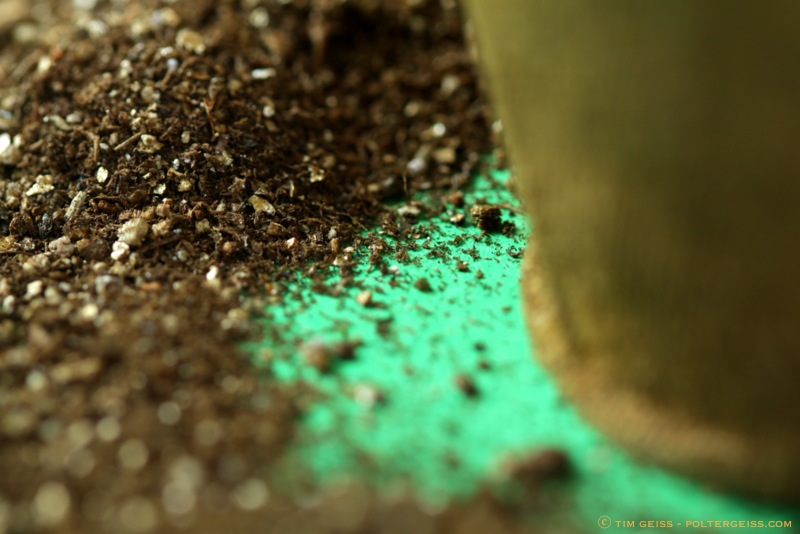 A fine-textured medium (growing mix) is essential for seed starting. Regular potting soil is too heavy, and won’t drain efficiently. Buy or make your own seed starting mix for best results.
A fine-textured medium (growing mix) is essential for seed starting. Regular potting soil is too heavy, and won’t drain efficiently. Buy or make your own seed starting mix for best results.
Seed Starting Basics
*
 Start your new plants the right way: Purchase fresh seed from a reliable, organic source, near your region. Seed collected close to your own geographic area tends to perform best. Farmers in my area (New England), almost always buy their seed from New England sources. And although I do buy seed from elsewhere (some from as far away as California) I purchase the bulk of my vegetable seed packets from suppliers in nearby Maine, Massachusetts and Vermont. And when choosing germinating mix, remember to always use an organic seed-starter with very fine, loose particles. Never use regular potting soil to germinate seeds. Why? It’s much heavier and it won’t drain well. Seedlings need moist, but not water-logged soil.
Start your new plants the right way: Purchase fresh seed from a reliable, organic source, near your region. Seed collected close to your own geographic area tends to perform best. Farmers in my area (New England), almost always buy their seed from New England sources. And although I do buy seed from elsewhere (some from as far away as California) I purchase the bulk of my vegetable seed packets from suppliers in nearby Maine, Massachusetts and Vermont. And when choosing germinating mix, remember to always use an organic seed-starter with very fine, loose particles. Never use regular potting soil to germinate seeds. Why? It’s much heavier and it won’t drain well. Seedlings need moist, but not water-logged soil.
Select your containers and trays: Many garden centers and online suppliers have plastic or peat cell-packs available for purchase. These packs are handy, because they usually come with plastic tops to keep the starter mix moist while seeds germinate. But, you can always use plastic wrap for ths purpose if you make/recycle containers. Some of my gardening friends like to make their own biodegradable starter pots from newspaper. You can also recycle old plastic six-packs or other containers, but you must sterilize those reused pots properly with warm, soapy water and a bit of disinfectant (bleach) to prevent the spread of disease. You will also need leak-proof trays to place beneath the seeds, in order to water them from the bottom (prevents washing the tiny seeds to the side of the pots and/or disturbing delicate roots). Whatever you choose to use, get everything ready —in one place— before you start.
available for purchase. These packs are handy, because they usually come with plastic tops to keep the starter mix moist while seeds germinate. But, you can always use plastic wrap for ths purpose if you make/recycle containers. Some of my gardening friends like to make their own biodegradable starter pots from newspaper. You can also recycle old plastic six-packs or other containers, but you must sterilize those reused pots properly with warm, soapy water and a bit of disinfectant (bleach) to prevent the spread of disease. You will also need leak-proof trays to place beneath the seeds, in order to water them from the bottom (prevents washing the tiny seeds to the side of the pots and/or disturbing delicate roots). Whatever you choose to use, get everything ready —in one place— before you start.
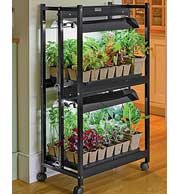 Set up grow lights: While it’s true that you can start seed in a brightly lit window (I do this with some windowsill herbs) you will get much better results (stronger root systems, stems and overall growth) if you use grow-lights positioned close to the seed trays. You can use regular florescent shop-lights, or you can purchase grow-lights (available at many garden centers and online suppliers). If you are serious about starting seed indoors (or growing tropical houseplants) grow lights are a great investment. If you already own grow-lights, clean them and check bulbs and timers before you start your seed. Most vegetable seeds do not require heat-pads for germination. But it’s always a good idea to check the back of seed packets before you start, to be clear on requirements. Grow lights work best when they are raised up as the seedlings develop, keeping them close to (but not touching) the leaves. Crafty gardeners can try to construct their own systems, but grow-light systems —either floor or table mounted— can be purchased at all price points. Aim for durable, quality construction – with stands built to last.
Set up grow lights: While it’s true that you can start seed in a brightly lit window (I do this with some windowsill herbs) you will get much better results (stronger root systems, stems and overall growth) if you use grow-lights positioned close to the seed trays. You can use regular florescent shop-lights, or you can purchase grow-lights (available at many garden centers and online suppliers). If you are serious about starting seed indoors (or growing tropical houseplants) grow lights are a great investment. If you already own grow-lights, clean them and check bulbs and timers before you start your seed. Most vegetable seeds do not require heat-pads for germination. But it’s always a good idea to check the back of seed packets before you start, to be clear on requirements. Grow lights work best when they are raised up as the seedlings develop, keeping them close to (but not touching) the leaves. Crafty gardeners can try to construct their own systems, but grow-light systems —either floor or table mounted— can be purchased at all price points. Aim for durable, quality construction – with stands built to last.
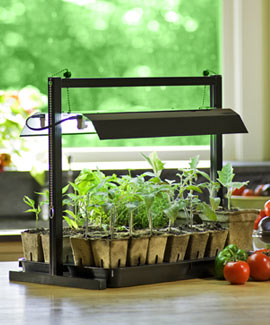 Quality grow lights (like the one above, from Gardener’s Supply Company) are a great investment if you are serious about getting a jump-start on the growing season.
Quality grow lights (like the one above, from Gardener’s Supply Company) are a great investment if you are serious about getting a jump-start on the growing season.
Time your starts: Check the back of your seed packets for the number of days to germination, and the start date. Usually the packet will list the start date by referencing the number of weeks prior to the last frost date. Do you know your last frost date? Check with your local USDA cooperative extension service (click here for interactive map) or, the awesome, easy-to-use table for common vegetable start dates on The Farmer’s Almanac website (Just enter your city and state in the pace provided – love the Farmer’s Almanac)! If you live in zone 4 or 5, February is a good time to start onions, leeks, chives, celery and hardy herbs. Later this month (or early March) you can begin cool-season crops like broccoli, cauliflower, cabbages and brussels sprouts. Unless you are located in zone 7 or warmer, wait to start warm-season crops (like tomatoes, peppers and eggplant) until mid to late March, or even early April.
Moisten the starter mix and fill containers: One the best ways to insure that your seedlings have plenty of moisture is to soak your germinating mix overnight prior to planting. I like to wet the mix in a big tub the night before planting; adding enough warm water to make it damp, but not soupy. I know the starter medium is ready to use when all of the water is absorbed and the mixture is moist like a fresh cupcake, but not wet and gloppy like mashed potatoes. If you try to form a ball it should crumble apart, but still feel moist to the touch (just like natural garden soil at planting time, remember how great that smells?)
Plant your seeds in the containers: Plant two to three seeds per cell (you will thin the plants later) Not sure of how deep to plant? The back of the seed packet should list planting depth. But if it doesn’t, aim to plant the seed three times as deep as it is large (measuring by diameter).
Cover the seeds and wait for germination: Once all the seeds are planted and set in their trays, cover them with the plastic tops, or loosely with plastic wrap (to contain moisture and raise humidity) and place them in a 60-75 degree (fahrenheit) room. Be sure that the catch trays are filled with water, and check the seed starts daily to insure that the soil remains moist. A plastic spray-misting bottle can be useful in the early stages of seed starting to insure that the surface of soil remains moist. Seed trays can be placed beneath grow lights, but you won’t need to turn them on until the seeds pop out of the soil. Again, unless the seed requires warmer germination temperatures (or if you are starting plants in a cool/dark spot like a cellar) you won’t need heating pads for the trays.
 Sunflowers are an exciting and easy crop for youngsters to grow in recycled milk cartons. But wait a bit longer on this crop. February is too soon to start sunflowers in New England…
Sunflowers are an exciting and easy crop for youngsters to grow in recycled milk cartons. But wait a bit longer on this crop. February is too soon to start sunflowers in New England…
Light up their life: As soon as the seeds germinate, they’ll need at least 12 hours of light per day (and for many vegetables 14-18 hours is even better) In these northern parts, this is where grow-lights come in. Remembering to turn lights on-and-off can be tricky at first, and an inexpensive timer can really be your best work-buddy!
Feed me Seymour!: Once the seedlings have a set of “true” leaves (as opposed to the tiny seed leaves, which emerge first), give them their first meal: a bit of dilute, organic fertilizer (I use a very weak fish emulsion solution, diluted in water).
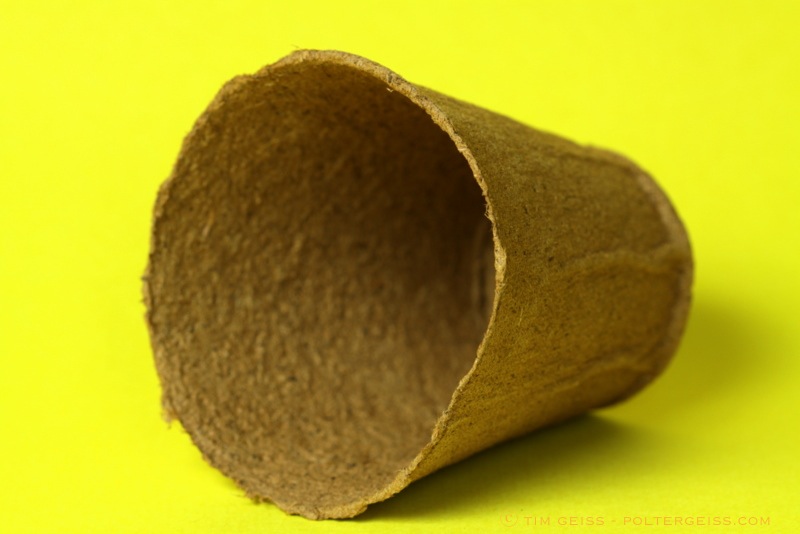 Biodegradable pots allow room for root development, and can be popped right into the soil (no struggling to remove tiny plants without damage!)
Biodegradable pots allow room for root development, and can be popped right into the soil (no struggling to remove tiny plants without damage!)
Transition time: Once spring closes in, seedlings will begin to really take off. As certain young plants grow, they will need thinning and perhaps later, transplanting to larger pots before being “hardened off” (process of bringing seed outdoors for short periods of time to adjust to outside temperatures and light). We’ll talk more about this process later. In meantime, If you are starting many seeds, it’s also wise to invest in a fan for air circulation. Check with some of the seed supply sources linked here for more information, or visit your local garden center. It’s also helpful to have some larger sized pots and regular potting soil on hand for later. Peat pots (or other biodegradable containers) are particularly good for the purpose of transplanting, because they can be placed directly into the soil. This reduces root-disturbance and makes for a swifter, stress-free transition into garden soil.
And although we are all anxious to get back out in the sweet earth, resist the urge to rush tender plants into a cold garden. Unless you have hoop houses, row covers, cloches or other protection for your crops, it’s too risky to push them out before the recommended date (again refer to the links at the top of this post). I’ll be writing more about the process of seed starting over the coming weeks and months.
For more information and seed sources, please visit previous posts, linked here!
 Here comes the sun! It may still be a little early for most vegetable starts, but growing windowsill herbs (like chives and cilantro) is fun and easy anytime…
Here comes the sun! It may still be a little early for most vegetable starts, but growing windowsill herbs (like chives and cilantro) is fun and easy anytime…
Special thanks to Tim Geiss for his fantastic seed starting photos. Visit Tim’s site here.
Product images are the property of linked online retailers.
Article and noted photo â“’ Michaela at TGE
All content on this site, (with noted exceptions), is the property of The Gardener’s Eden and may not be used or reproduced without prior written consent.
Do you enjoy reading The Gardener’ Eden? You can help support this blog by shopping with our affiliates. A small percentage of any sale originating on this site will be paid back to The Gardener’s Eden. Thank you!
***
3 Replies to “Here Comes the Sun, Doo’n Doo Doo: Gettin’ Started with Seed Starting…”
Comments are closed.

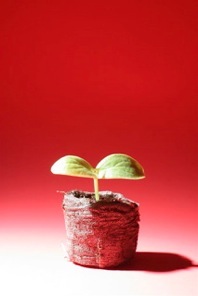


Hi Michaela,
Thanks for sharing the love of starting seeds. It’s Friday, the sun is shining — a great day to start some seeds. -David Grist, Gardener’s Supply
@ David – And many thanks to all of you up there in the north, at Gardener’s Supply Company, for great products and fair prices. I’m proud that such a wonderful, employee-owned company is located right here in the great state of Vermont! Thinking spring! ;) Michaela
Even though I’m not an indoor seed starter myself, posts like these get me revving for spring. Walking around, looking a crocus tops and listening to bird calls as the rain melted snow was my “spring’s a coming” time this weekend.